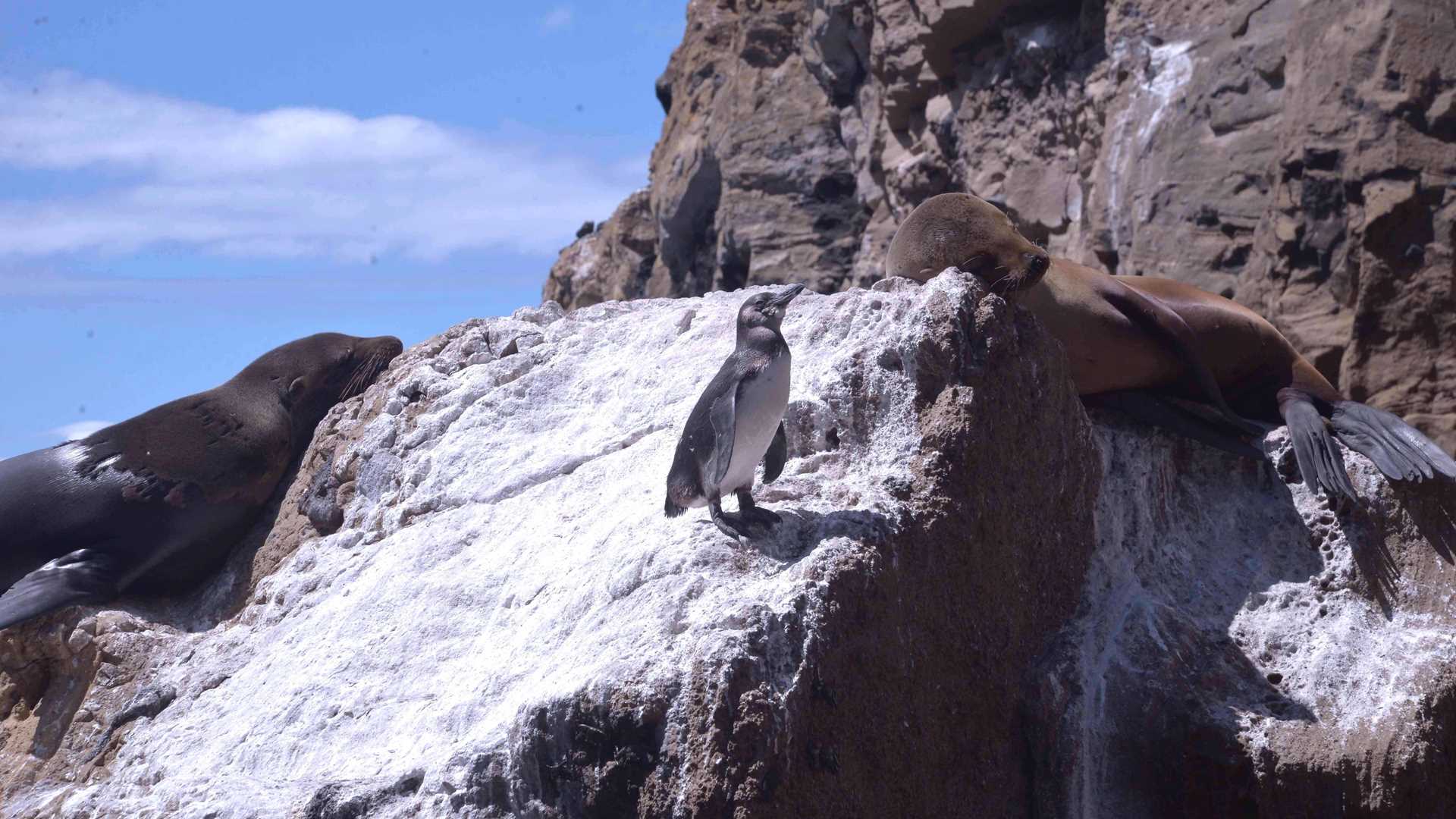Our day today was full of amazing surprises. The first was the sight of dolphins from the sky deck of the National Geographic Islander. After a delicious breakfast, we went for a Zodiac ride along the shore of Punta Vicente Roca on Isabela Island, where we spotted the second sea lion species of the trip—the Galapagos fur seal. During our morning snorkel, a huge manta ray hovered nearby. In the afternoon, our young explorers learned how animals adapt to their environment by playing “fashion a fish.” We had a remarkable visit to Punta Espinoza on Fernandina Island, where we saw the largest marine iguanas in the Galapagos and had amazing conversations about the natural history and geology of the youngest island. We ended our day with our regular recaps, followed by a delicious dinner served by our talented galley staff onboard the National Geographic Islander.
- Daily Expedition Reports
- 20 Jul 2021
Punta Vicente Roca and Punta Espinoza, 7/20/2021, National Geographic Islander
- Aboard the National Geographic Islander
- Galápagos
Javier Cando, Naturalist
Javier was born on Santa Cruz Island and raised in the cool evergreen highlands where he developed his love and passion for nature and natural sciences. At age 17 he moved to Quito, the capital of Ecuador to attend university and study the English la...
Read MoreShare Report
Related Reports
11/23/2022
Read
National Geographic Islander II
Isabela and Fernandina
Our day began with the chance to point out a lot of interesting geological features as we enjoyed Zodiac tours along a massive flank of Ecuador Volcano on Punta Vicente Roca. In the afternoon, we took a sunny walk on Punta Espinoza on Fernandina Island. We spotted many iguanas, and a bunch of sea lions hanging around, too.
11/22/2022
Read
National Geographic Islander II
North Seymour & Rabida Islands
Relatively small and low compared to neighboring Santa Cruz, North Seymour is located to the north of Baltra. The island is dry with predominantly low shrubs, like prickly pear cacti. The incense trees are bare during the dry season. Seabirds like frigatebirds and blue-footed boobies nest on the island, and sea lions rest on the sand when they are not fishing. Land and marine iguanas also live here. Rabida is in the middle of the archipelago and has a striking red sand beach. We observed a small colony of sea lions of all ages resting or nursing. Behind the beach, American flamingos nest in a brackish lagoon. This island is full of contrasts and wildlife that we enjoyed observing during this day of expedition.







